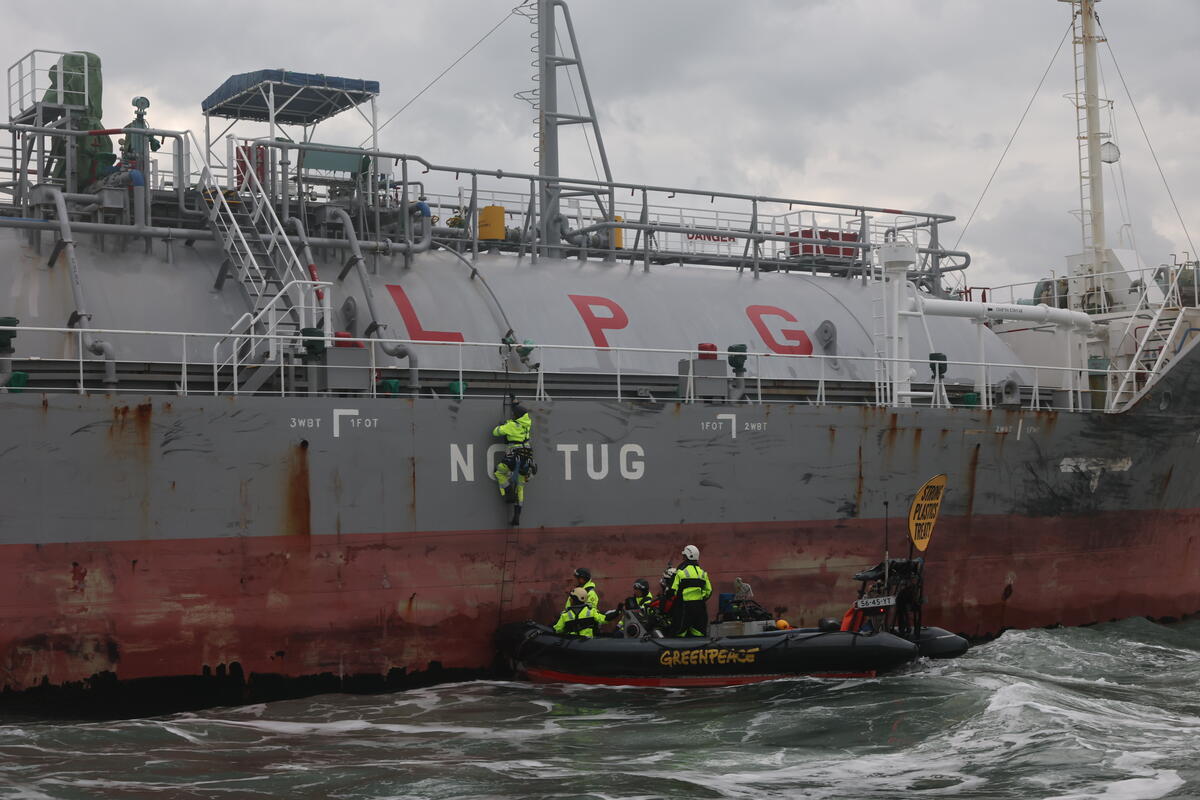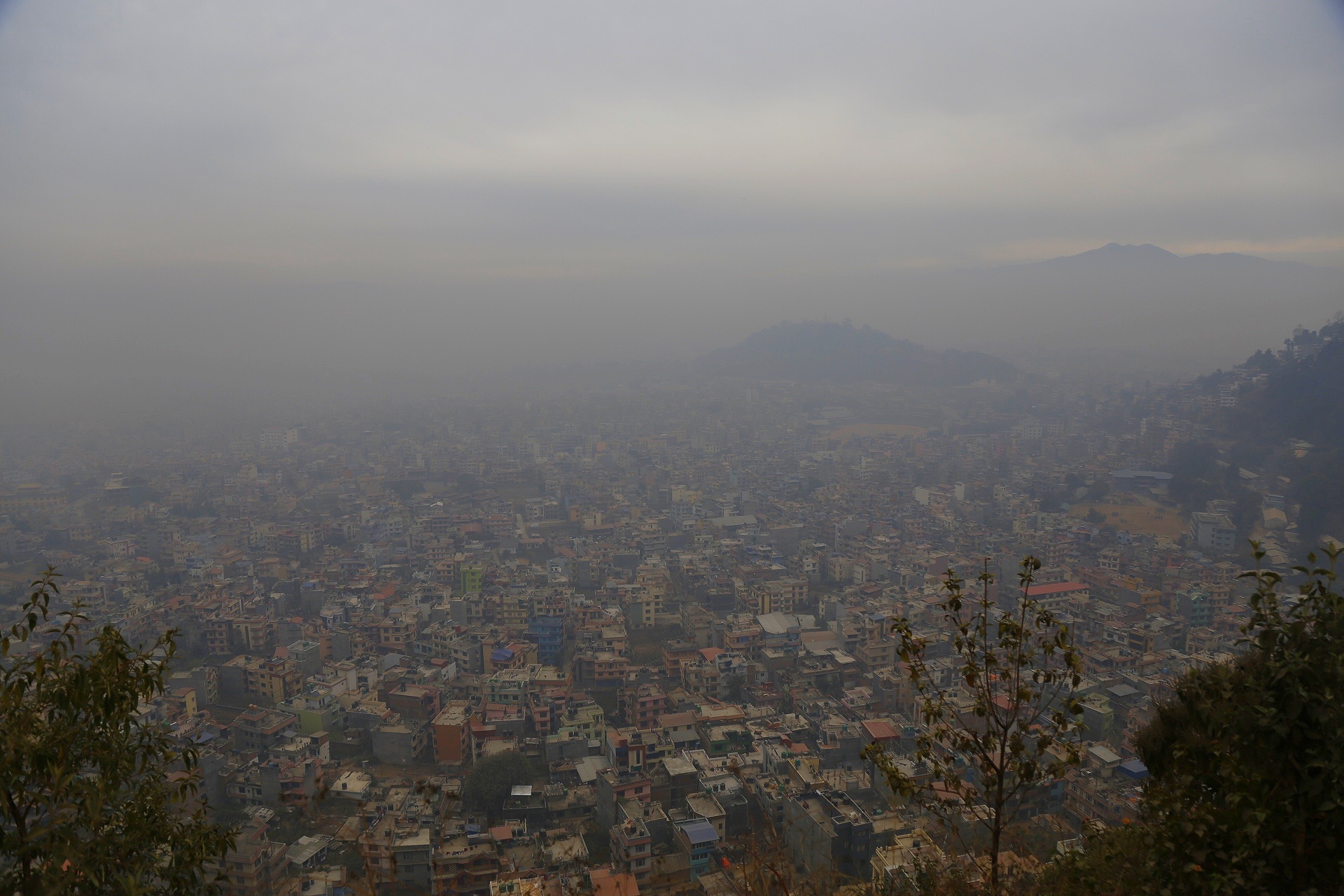Report on Air Pollution from Petrochemical Production and its Implications for Sustainable Development Goals
Executive Summary
A recent report by Greenpeace International, “Every Breath You Take: Air Pollution Risks from Petrochemicals Production for the Plastics Supply Chain,” highlights a significant public health crisis linked to the plastics industry. The findings reveal that over 51 million people across 11 nations are at risk of exposure to hazardous air pollution from petrochemical facilities involved in plastic production. This situation presents a direct challenge to the achievement of several Sustainable Development Goals (SDGs), particularly those concerning health, sustainable communities, and responsible production. The report advocates for a Global Plastics Treaty that mandates a substantial reduction in plastic production to mitigate these escalating threats to human and planetary health.
Public Health and Environmental Justice: A Challenge to SDG 3 and SDG 11
The report establishes a clear link between petrochemical production and adverse health outcomes, directly undermining SDG 3: Good Health and Well-being. Communities located near these facilities face potential exposure to a range of harmful airborne substances, which compromises public health and creates significant environmental justice concerns relevant to SDG 11: Sustainable Cities and Communities and SDG 16: Peace, Justice and Strong Institutions.
Key Health and Community Impacts
- Hazardous Pollutants: Petrochemical facilities emit harmful substances including Volatile Organic Compounds (VOCs), nitrogen oxides (NOₓ), sulfur oxides (SOₓ), and particulate matter (PM).
- Proximity and Illness: Studies confirm higher concentrations of these pollutants near facilities, with proximity linked to increased rates of illness, including cancer, respiratory diseases, and premature death.
- “Sacrifice Zones”: The United Nations has designated some of these heavily impacted areas as “sacrifice zones,” highlighting the severe environmental injustice where communities disproportionately bear the health and environmental burdens of industrial pollution.
Global Scope of the Crisis and Transboundary Implications
The analysis covers 11 countries, revealing a widespread threat that transcends national borders. This underscores the need for global cooperation as outlined in SDG 17: Partnerships for the Goals.
Report Findings by Region
- Population at Risk: Over 51 million people in the countries studied live within 10 km of plastics-linked petrochemical facilities, with 16 million residing within a 5 km radius.
- United States: The U.S. has the highest number of people at risk, with 13 million individuals, primarily in Texas and Louisiana, living in proximity to these plants.
- The Netherlands: The Netherlands has the highest proportion of its population at risk, with 4.5 million people (25.6% of the total population) living within the assessed exposure zones. Switzerland has the second-highest proportion at 10.9%.
- Transboundary Pollution: The report identifies that pollution from some facilities is transboundary, affecting communities in neighboring countries. For example, facilities in Germany impact Austria and Poland, while Dutch facilities affect Belgium and Germany.
Aligning with SDG 12: The Imperative for Responsible Production
The report’s central recommendation is a call to action that aligns directly with SDG 12: Responsible Consumption and Production. The continued expansion of plastic production is incompatible with sustainable development principles and exacerbates the climate crisis, a key concern of SDG 13: Climate Action.
Policy Recommendations for Sustainable Production
- Production Reduction: A primary demand is for the Global Plastics Treaty to mandate a 75% reduction in plastic production by 2040. This measure is presented as essential for protecting human health, the climate, and the environment.
- Curbing Expansion: The report warns against industry plans to expand global plastic production, which would create more “sacrifice zones” and intensify the climate, health, and waste crises.
- Global Plastics Treaty: The upcoming negotiations for the Global Plastics Treaty in Geneva (August 5-14, 2025) are identified as a critical opportunity to implement a legally binding framework that addresses the plastic crisis at its source, thereby advancing multiple SDGs.
1. Which SDGs are addressed or connected to the issues highlighted in the article?
SDG 3: Good Health and Well-being
- The article directly connects plastic production to a “public health emergency,” citing risks of exposure to hazardous air pollution for over 50 million people. It highlights that communities near petrochemical facilities suffer from higher rates of “cancer, respiratory disease, and premature death,” which are core concerns of SDG 3.
SDG 10: Reduced Inequalities
- The report points to significant inequalities by identifying that communities near petrochemical facilities “suffer disproportionately.” The use of the term “sacrifice zones” by the UN, as mentioned in the article, explicitly refers to areas where marginalized communities bear an unequal burden of environmental and health hazards, directly linking the issue to the goal of reducing inequalities.
SDG 11: Sustainable Cities and Communities
- The article focuses on the impact of industrial pollution on human settlements. It states that in every country studied, “residential areas lie within 10 km of plastic-linked petrochemical plants” and that millions of people live in these high-risk zones. This relates to making cities and human settlements safe, resilient, and sustainable by addressing air quality and the environmental impact of industrial activities on communities.
SDG 12: Responsible Consumption and Production
- The central theme of the article is the unsustainable production of plastics. It calls for tackling the problem “at its source: plastic production” and advocates for a “75% cut in plastic production by 2040.” This directly addresses the need for sustainable production patterns and the environmentally sound management of chemicals and wastes throughout their life cycle.
SDG 13: Climate Action
- The article links the plastics crisis to the climate crisis, noting that plastic production is based on fossil fuels. The call to cut plastic production is presented as a measure to address the interconnected “climate, health and waste crisis,” aligning with the goal of taking urgent action to combat climate change and its impacts.
SDG 17: Partnerships for the Goals
- The article is framed around the “Global Plastics Treaty talks” and the international negotiations in Geneva. This highlights the importance of global partnerships and multi-stakeholder cooperation (governments, NGOs like Greenpeace) to address a transboundary problem, which is the essence of SDG 17.
2. What specific targets under those SDGs can be identified based on the article’s content?
Target 3.9: Substantially reduce deaths and illnesses from hazardous chemicals and air pollution
- The article’s focus on “hazardous air pollution from plastic linked petrochemical production” and the resulting “cancer, respiratory disease, and premature death” directly corresponds to this target, which aims to reduce illnesses and deaths from air pollution and contamination.
Target 10.2: Empower and promote the social, economic and political inclusion of all
- The identification of “sacrifice zones” where communities “suffer disproportionately” relates to this target. The environmental injustice highlighted in the article, where certain communities bear the health burden of industrial production, is a form of exclusion that this target aims to eliminate.
Target 11.6: Reduce the adverse per capita environmental impact of cities, including by paying special attention to air quality
- The report’s findings on the proximity of residential areas to petrochemical plants and the exposure of millions to “dangerous air pollutants” directly align with this target’s goal of improving urban air quality and managing the environmental impact on cities and communities.
Target 12.4: Achieve the environmentally sound management of chemicals and all wastes throughout their life cycle
- The article calls for managing the “plastics supply chain” and reducing the emission of “harmful airborne substances” from petrochemical facilities. This aligns perfectly with the target of managing chemicals and wastes to minimize their adverse impacts on human health and the environment. The call to cut production is a strategy to achieve this.
Target 13.2: Integrate climate change measures into national policies, strategies and planning
- The push for a “Global Plastics Treaty” that cuts production of fossil-fuel-based plastics is a clear example of integrating climate considerations into international policy and strategy, as called for by this target.
Target 17.16: Enhance the global partnership for sustainable development
- The entire context of the article—a report released to influence “negotiators at the Global Plastics Treaty talks”—is an example of a multi-stakeholder partnership (NGOs, governments) working to achieve a common goal through international agreements, which is the focus of this target.
3. Are there any indicators mentioned or implied in the article that can be used to measure progress towards the identified targets?
For Target 3.9:
- Implied Indicator: Mortality rate attributed to air pollution. The article mentions “premature death” in communities near facilities.
- Implied Indicator: Incidence of diseases attributed to pollution. The article explicitly names “cancer, respiratory disease” as health impacts.
- Proxy Indicator: Number of people at risk of exposure to hazardous air pollution. The article quantifies this as “over 50 million people in 11 countries.”
For Target 11.6:
- Implied Indicator: Annual mean levels of fine particulate matter and other pollutants in cities. The article specifies the pollutants of concern: “Volatile Organic Compounds (VOCs), nitrogen oxides (NOₓ), and sulfur oxides (SOₓ) and particulate matter (PM).”
- Proxy Indicator: Proportion of the urban population living in proximity to polluting facilities. The article provides specific data: “16 million live within 5 km” and “Over 51 million people… live within 10 km.” It also gives country-specific data, such as “25.6% of the entire population” in the Netherlands.
For Target 12.4:
- Indicator: Amount of plastic produced. The article proposes a clear, measurable indicator for progress: a “75% cut in plastic production by 2040.”
- Implied Indicator: Amount of hazardous substances released to the air. The article mentions that petrochemical facilities “emit a suite of harmful airborne substances.” Measuring the reduction of these emissions would be a key indicator.
For Target 13.2 and 17.16:
- Indicator: The establishment and ratification of the Global Plastics Treaty. The article centers on the negotiation process, making the successful creation and implementation of the treaty the primary indicator of progress for both partnership and climate integration goals.
For Target 10.2:
- Indicator: Reduction in the number of “sacrifice zones” or disproportionately affected communities. Progress could be measured by tracking health and environmental data in the identified high-risk areas (e.g., in Texas and Louisiana) to ensure that the burden of pollution is reduced and not disproportionately carried by specific populations.
4. SDGs, Targets and Indicators from the Article
| SDGs | Targets | Indicators Mentioned or Implied in the Article |
|---|---|---|
| SDG 3: Good Health and Well-being | 3.9: Substantially reduce deaths and illnesses from hazardous chemicals and air pollution. |
|
| SDG 10: Reduced Inequalities | 10.2: Empower and promote the social, economic and political inclusion of all. |
|
| SDG 11: Sustainable Cities and Communities | 11.6: Reduce the adverse per capita environmental impact of cities, paying special attention to air quality. |
|
| SDG 12: Responsible Consumption and Production | 12.4: Environmentally sound management of chemicals and all wastes throughout their life cycle. |
|
| SDG 13: Climate Action | 13.2: Integrate climate change measures into national policies, strategies and planning. |
|
| SDG 17: Partnerships for the Goals | 17.16: Enhance the global partnership for sustainable development. |
|
Source: greenpeace.org







